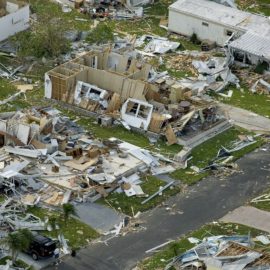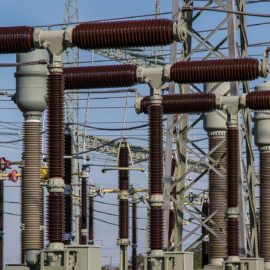
Entergy New Orleans is hardening a lot of the network in the city to protect from hurricane and other outages. We will pay.
Entergy New Orleans on Friday unveiled a sweeping plan that would harden 33,000 structures and 650 miles of power lines to minimize power outages like the one that led to widespread misery after Hurricane Ida. If enacted, the utility predicts the plan could save customers $2.6 billion over 50 years. But it would carry an eye-popping $1.3 billion price tag. The plan was submitted to Entergy’s local regulator, the City Council, which will also consider alternative proposals relying on solar- and battery-backed “microgrids.”
nola.com
The city council, and residents, were upset with the downed electricity lines after Ida. The prolonged power outage did not help anyone. It has also led to the Lighthouse project which will create hubs using solar power.
The council set the planning process in motion last October after Ida. Outrage over the days without power prompted questions about why the city’s power system wasn’t prepared for major hurricanes, and what it would take to make the system more reliable. Entergy was tasked with creating a plan, but the council will be faced with difficult questions about how much money residents should pay upfront to defray the cost of future storms. “This is everything that can be done. That doesn’t mean that’s what we’re proposing to do,” said Courtney Nicholson, Entergy’s vice president of regulatory affairs. “The council is going to have the big task of looking at all of this. How much can customers in this city absorb? How do we prioritize the list of projects?” The council has been highly critical of Entergy’s alleged failure to harden its grid in the past, including a period between 2013 and 2015 when the council’s advisors alleged that the company diverted money slated for system maintenance and distribution upgrades to other purposes. The utility says that it’s since plowed money into upgrades and increased reliability by 30% since 2017.
Most people agree that more money has to be spent.
Going forward, both parties seem to agree that more spending is necessary to gird the grid for an era of bigger and more frequent storms thanks to climate change. In its resolution launching the planning process for storm-hardening last year, council President Helena Moreno and cosponsors noted the huge costs associated with storms like Zeta and Ida, and said that “this cycle of damage and repair is not sustainable for the company or ratepayers.”
Entergy’s plan is more of a pick and choose and there are others suggesting plans also.
Entergy’s plan is more of an à la carte menu than a prix fixe meal, and other groups like the Alliance for Affordable Energy are also offering options. Nicholson said the process will look different than a storm hardening project the utility created after Hurricane Isaac. “It’s not only Entergy hardening the system that is critical here. This is part of a community conversation where there are a number of solutions we can look at,” she said. Entergy engineers said they used computer modeling to run 1,000 simulations of a future with more and bigger storms. They identified the costs those storms could incur on customers, in terms of minutes of outages, and on the utility for repairs to infrastructure like downed wires and utility poles. Overall, the utility identified 890 projects throughout the city with favorable cost-benefit ratios. They include 184 projects for rebuilding distribution feeder lines — the big trunks of the power distribution tree — that would cost $821 million over 10 years. Then there are 674 smaller, “lateral” lines — the branches of the system — that could be rebuilt to withstand stronger winds. Entergy also identified 30 projects involving conversion from overhead to underground distribution, a costly process that would nonetheless yield results in those specific cases. Overall, the lateral hardening projects would cost $402 million.
Many plans require concrete or steel polls not the current wood ones.
Many of the upgrades involve switching from wood utility poles to steel and concrete. Some rebuilds would involve moving distribution lines away from trees that pose a risk. Although most of the distribution hardening projects remain confidential, Entergy highlighted a few in its public filing. They include a feeder rebuild in Algiers that would harden 324 structures on a 4-mile line that serves 900 customers, and a project to put a third of a mile of overhead line in Treme under ground. The latter project would cost $1.4 million and produce $5.4 million in benefits, including $1.3 million in avoided restoration costs, according to Entergy’s model. In addition to distribution, the plan also looks at transmission lines, the roots of the system that bring electricity from other parishes. The utility identified two attractive projects: a rebuild of the 23-mile transmission line over Lake Pontchartrain that connects Entergy’s Michoud substation with a Cleco Power substation, and the replacement of several structures on a 1-mile Gulf Outlet transmission line. The plan does not encompass an issue of keen interest after Ida — the parts of the transmission system outside city limits. All eight transmission lines into the city failed during the storm, leaving New Orleans cut off from the power plants that produce electricity for the area. Entergy New Orleans is one of five subsidiaries of the larger Entergy Corp. holding company. Entergy New Orleans CEO Deanna Rodriguez said those companies are set to reveal their storm hardening plans next, and they are actively reviewing the transmission lines into the city.
Now that we know what they wsant to do we come to the big numbers, the cost.
The big list of potential projects carries an equally impressive cost. In its submission, Entergy suggests spreading the cost out equally among ratepayers as a rider on top of current bills. The cost would rise over the years as more projects are built. Under Entergy’s plan, residents would first see a bigger bill in 2024. If the plan were fully implemented, the 26-cent impact on an average customer’s bill that year would rise steadily through 2032, when the average residential customer would pay an extra $31.46 per month. The storm hardening plan is only one of a number of recent Entergy filings to the City Council that could raise customer rates. The utility is also requesting a $4 monthly increase to the average residential customer to replenish its storm reserve, a $7 increase under its regular formula rate plan and a $4 increase to cover the costs of recovering from Ida.
What we pay is u[ to the City Council and since they would pay like us, maybe we can trust them.
Entergy officials say it will be up to the City Council to determine how much more residents can bear to prepare for future storms. Yet they argue that in many cases it would be better to spend money preparing poles to withstand storms than to repair them afterward. The utility is pursuing federal funds for storm hardening under a FEMA resilience program or the bipartisan infrastructure law passed last year. Portions of the costs to ratepayers could be defrayed if either of those requests are successful. Council member JP Morrell, chair of the City Council’s utility committee, didn’t immediately comment on the plan. A spokesperson said that staffers will be scrutinizing the filing.
This is where the microgrids come in. Using them would mean we would n ot need all of Entergy’s fixes.
Entergy isn’t the only entity to offer up a proposal to the City Council. The advocacy groups Alliance for Affordable Energy and Together New Orleans were also set to submit proposals Friday that rely heavily on “microgrids,” which can operate as islands of electricity even if big storms knock out transmission and feeder lines. In its filing, the Alliance for Affordable Energy said the City Council should look at “creative financing models” that minimize the burden on ratepayers, including incentives for homeowners to install solar panels. “New Orleans ratepayers, who suffer one of the highest energy burdens in the country, must not be made to bear the full cost of resilience and storm hardening measures that Entergy should have undertaken years ago,” the group said. Entergy’s plan also suggests that there could be a role for microgrids in the future. Although the public version of the company’s filing does not include a detailed list of projects, the utility says they could add another $200 million to the cost of its overall proposal. “At a high level, Entergy New Orleans is proposing a variety of microgrid options for consideration and further discussion, including battery, natural gas, solar, and hybrid options,” said Lee Sabatini, a utility spokesperson. Sabatini said the non-public lists of hardening and microgrid projects contain “highly sensitive information” that “would be competitively and operationally harmful to disclose.”
I don’t like the fact that I pay for the mistakes Entergy made. They should have started this hardening years ago as routine work.



